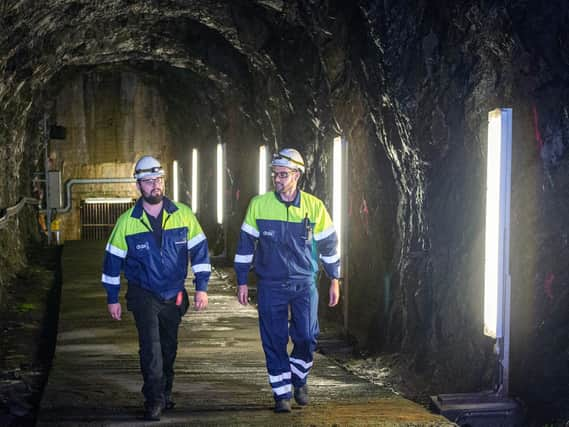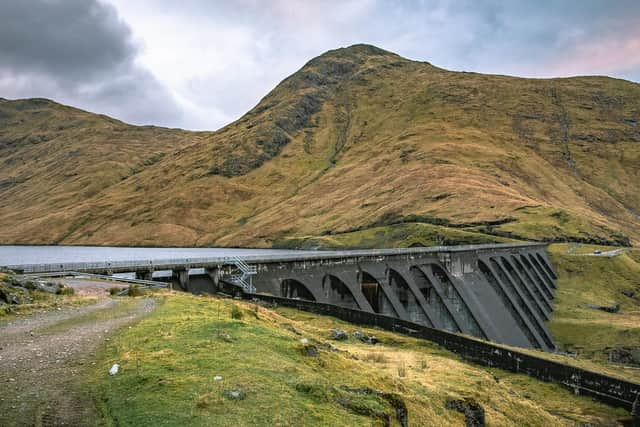Moving mountains at Ben Cruachan to pave the way to net zero - Andy Koss


The climate crisis has focused the world’s attention on efforts to achieve net-zero carbon emissions. As a result, the growth of critically important renewable power technologies is continuing apace.
Balancing the need for this transformation of the energy system, whilst ensuring homes and businesses have the electricity they need, even when the wind is not blowing, is incredibly challenging – but there is a solution, and it lies within one of Scotland’s Munros.
Advertisement
Hide AdAdvertisement
Hide AdBen Cruachan is the tallest mountain in Argyll. Any hill walker would be forgiven for thinking it is a Scottish peak much like many others in the West Highlands. However, deep underground, inside the mountain, lies a hollowed-out cavern, where a unique pumped storage hydro power station was constructed almost six decades ago.


Unlike other power stations which can take hours to reach their maximum output, this one can go from spin mode to full load in just 30 seconds – helping to quickly balance the system and maintain secure supplies for up to 800,000 homes across Scotland.
The story of how the “Hollow Mountain” generates electricity begins high above Loch Awe on Ben Cruachan’s towering slopes. A dam stretching for more than 300 metres across the mountainside is used to store water in a vast reservoir. When the grid needs more electricity to meet rising demand, vast quantities of water are released down through the turbines inside the mountain, generating up to 440 megawatts of power, before flowing into Loch Awe below.
When there is too much electricity on the grid, the process reverses and the excess power is used to pump water from the loch below up through the mountain to the reservoir above, ready to be used when demand increases once more. This enables Cruachan to act like a giant battery, storing excess power for later use.
This flexible, reversible process was originally devised to support the growth of nuclear power, a power generation technology which cannot easily be flexed up or down to meet fluctuations in demand.
In the last decade, as well as supporting the nuclear sector, Cruachan has been instrumental in enabling more weather-dependent renewables, such as wind power, to come onto the system. It has bridged the gap which inevitably occurs when the wind is not blowing and has absorbed additional electricity when wind turbines are producing more power than is required – as they did during Storm Ciara last month.
Not only does Cruachan help to balance supply and demand on the electricity system, it also provides the critical support services to keep the electricity system stable. In January Cruachan was awarded a world-first contract to provide essential system stability services to the National Grid, a tender process which reflected the growing need for system support services to keep the lights on as more renewables come online.
By developing further power generating capacity within the Hollow Mountain, Cruachan would be able to play an even greater role in delivering the flexibility needed to meet Britain’s energy needs – paving the way for more renewables.
Advertisement
Hide AdAdvertisement
Hide AdWe believe that Drax was the first company in the world to announce an ambition to become carbon negative, and Cruachan sits right at the centre of our strategy to deliver on this promise by 2030.
Building Cruachan required engineering endeavour and ingenuity, as well as astonishing bravery. The power station was built over a six-year period, starting in 1959, by a diverse workforce many of whom came from Ireland, with some from as far afield as Asia.
Those who blasted and drilled their way through the mountain’s granite core came to be known as the “Tunnel Tigers” for their ferocious work ethic and bravery in the face of horrendous conditions underground. Tragically 15 men lost their lives building the power station.
The bravery, ingenuity and vision required to build Cruachan and meet the needs of a changing country 60 years ago are the same attributes required today, if we are to tackle the growing climate emergency.
Unlocking the potential for Cruachan to produce up to twice as much flexible power through its expansion would help to support the energy system of the future, so more renewables could come onto the grid, enabling further decarbonisation, whilst keeping the lights on and the system stable.
With the right investment and regulatory framework from government to underpin the investment needed to expand pumped storage hydro power stations like Cruachan – mountains could be moved, so we have the flexible power needed to achieve a zero carbon future.